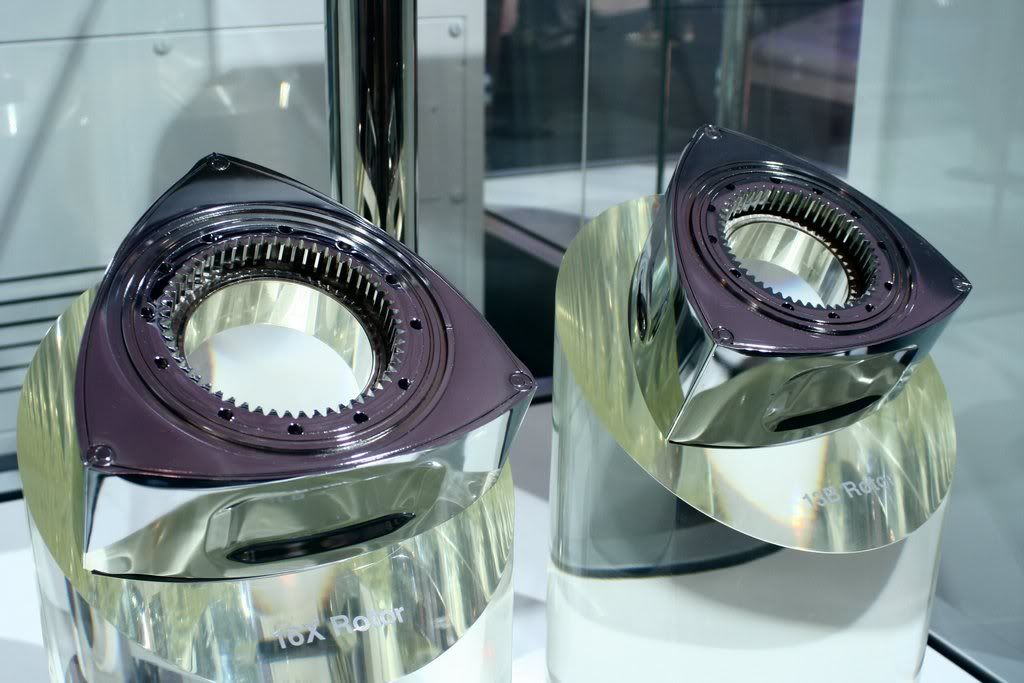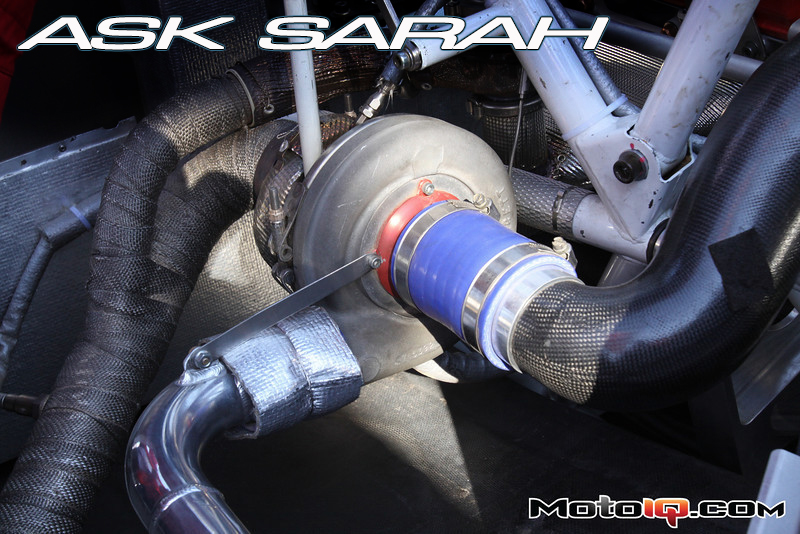,
Every time someone mentions a rotary engine, it’s a common statement to hear how unreliable the engines were. I’ve never had any experience with one and am not quite sure what makes them so unreliable. What’s the deal with rotary engines?
Mark S.
 |
|
Mazda 16X rotors; Mazda rotors are comprised of a cast iron rotor and a steel rotor gear held in place by 9 or 12 roll pins.
|
Ignorance is bliss. Rotary engines aren’t unreliable, they’re finicky. They’re like a high maintenance girlfriend – as long as you keep her properly lubricated and ride her real hard; wait, maybe that’s a bad analogy… But I make a good point. It's just that a badly tuned piston engine might go a few hundred miles before calling it quits but a poorly tuned rotary engine might not even get down the street.
Rotards wouldn't have such devotion for an engine if it didn't have its benefits. Rotary engines have fewer moving parts – three lobed rotor(s) and an eccentric shaft. Compare this to a piston engine with all sorts of moving pieces from the crankshaft to pistons to conrods to valves to timing chain or belt, etc. The rotor rotates within the housing generating the four strokes in the power cycle between the rotor's edge and the housing. Rotary engines have no reciprocating motion like piston engine's and are balanced by counterweights so there's very little vibration. They are more compact and lightweight and produce a smooth power delivery. The earlier versions (13B T and REW) weren't the most *cough, cough* “emissions friendly” engines due to the hydrocarbons discharging (er, spewing) during the port overlap created by the peripheral exhaust ports but the multi-side ports in the 13B MSP Renesis engine introduced in the RX-8 combated this issue.
 |
|
Here is a closeup of Mazdatrix's 13B / REW hybrid. The rotary housing is a slight peanut (epitrochoid) shape with the rotor tips forming three chambers. As the rotor makes a “roulette” circuitous path through the housing, it controls the intake and exhaust timing. The rotor tip clearances must be maintained for the best reliability and power.
|
The design of a rotary engine leads to one of the more common points of failure. In a piston engine, the contact surface area is large and kept well lubricated to seal the combustion chamber to the crankcase. In a rotary engine, the tips separate the chamber walls as the rotor spins in the housing. They must be located very precisely, capable of maintaining tight seals and bearing high loads, and hard enough to withstand surface scratches similar to the requirements demanded from a standard cylinder lining. If the tips aren't maintained or the seal or bearing clearances aren't up to spec, the engine's reliability is sacrificed.
 |
|
The key to a properly built Wankel engine is to pay special attention to ensuring the seals are precise.
|
The apex seals in a rotary engine (similar to piston rings in a piston engine) are also very susceptible to poor tuning and detonation. With a turbo or supercharger which increases engine temps, you're taking more chances. Rotary engines suck down copious amounts of motor oil. The seals aren't as effective as piston rings and small amounts of oil are metered into the combustion chamber to protect the apex seals. Adjacent chambers share a seal so there's no other way to lubricate. The engine must be warmed up and cooled down properly before and after it's operated. And on occasion, you need to take it up to redline to clean up all the carbon build up. This will help prolong the seal's life but when they do go, replacement isn't that easy breezy.
And then comes the big decision – based on your build goals, which ones will you replace them with? OEM steel ones have a good lifespan but can destroy the housings at high rpm. Carbon/aluminum ones can handle higher rpm but you'll be rebuilding more often and they don't seal as well at low rpm like idle or starting the engine up. Ceramic ones are the strongest, build great compression, and won't take the chrome off the rotor housings, but are much more expensive. Something like the Ianetti ceramic apex seals can set you back almost 2 G's on a two rotor engine! The happy ending is longevity, I suppose… Installation is like anything involving seals – it requires a lot of attention to detail.
 |
|
The apex seals are being carefully pushed down into place. The seals are prone to detonation and heat can warp the rotor and pinch the seals causing them to break as the rotor spins its eccentric course leading to poor compression.
|
Rotary engines are also sensitive to high rpm. A rotary engine that will operate at high rpm (over 8k) for long periods of time may want to be reinforced with snap rings to retain the rotor gears and keep them from “walking out”. This practice was employed by Mazda for its racing engines to resist the added vibration that can damage the stationary gear. You may also have issues turbocharging a rotary NA engine without a little extra prep work as they have a different coating on the rotor housings and weaker stationary gears. Good thing most of them are already turbocharged since rotary engines are less thermodynamically efficient, but most of that wasted energy is contained in the exhaust gases which can be used to supply the compressor wheel.
For more cool rotary madness, check out Eric Hsu's ode to the rotary, Dave Coleman's Rotary Museum, or the Mazdatrix radical rotary build. Afterwards, call yourself an expert, get a rotary car, (resist the urge to replace the engine with an LS motor), stay diligent about maintenance, don't abuse it, and enjoy being a part of a small circle of specialized enthusiasts.
Got a difficult tech question? Email Sarah at asksarah@motoiq.com



